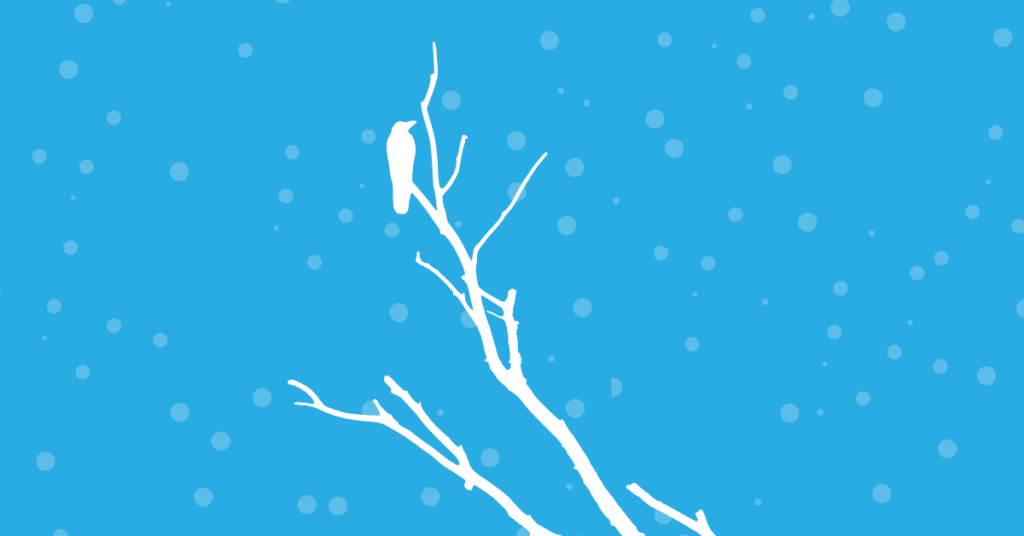Get summary, textbook solutions, questions, answers, notes, extras, pdf for the poem Dust of Snow by Robert Frost which is a part of SEBA (Assam Board), TBSE (Tripura Board) Class 10 English (literature, first language) First Flight syllabus.

Summary: Robert Frost’s short poem “Dust of Snow” sheds light on the unfathomable healing power of nature and small things. There is nothing that nature cannot cure, from a bad mood to illness. On one of these awful days, a crow’s movement near a hemlock tree powdered snow on him. The snow instantly makes him happy. His day improves significantly. Thus, the supremacy of nature as a whole let him realise how insignificant his problem was. The fact that the hemlock tree is deadly, paired with the crow being an indicator of doom and terror, is employed ironically in the poem as the carriers of happiness in the poet’s life. The poet has attempted to demonstrate through these things that things associated with negative aspects of life may occasionally be the source of change and happiness. Being outside in nature, with all of its unpredictability, can benefit anyone, at any time, anyplace.

Video tutorial
Thinking about the poem
1. What is a “dust of snow”? What does the poet say has changed his mood? How has the poet’s mood changed?
Answer: Here “dust of snow” refers to the tiny snow particles. Because the particles are so small, the poet refers to them as “dust.” When snowflakes fell on him, the poet was in a terrible mood. The poet’s mood was instantly lifted, and his day improved dramatically as a result.
2. How does Frost present nature in this poem? The following questions may help you to think of an answer.
(i) What are the birds that are usually named in poems? Do you think a crow is often mentioned in poems? What images come to your mind when you think of a crow?
Answer: Birds such as the sparrow, nightingale, and peacock are frequently mentioned in poems. Crows, on the other hand, are frequently regarded as heralds of doom and fear. They are frequently used in negative contexts.
(ii) Again, what is “a hemlock tree”? Why doesn’t the poet write about a more ‘beautiful’ tree such as maple, an oak, or a pine?
Answer: A hemlock tree is a tree that has been linked to something negative and poisonous.
The poet does not write about a more ‘beautiful’ tree because he likely wanted to imply that something considered inauspicious does not always mean something bad. Rather, he implies that something poisonous and negative, such as the hemlock tree, caused him to change his mood.
(iii) What do the ‘crow’ and ‘hemlock’ represent — joy or sorrow? What does the dust of snow that the crow shakes off a hemlock tree stand for?
Answer: The crow and the hemlock tree both represent grief. Frost has used both negative creatures (the crow and the hemlock tree) as carriers of positivism and strength to improve his day. By omitting birds like the sparrow and nightingale, as well as trees like maple, oak, and pine, the poet has attempted to dispel all of our preconceived notions about certain natural agents. He has attempted to persuade us that we see the world not as it is, but as we want to see it. As a result, the crow sitting and a hemlock tree together improved his day. Snow dust represents happiness.
3. Have there been times when you felt depressed and hopeless? Have you experienced a similar moment that changed your mood that day?
Answer: There have been numerous occasions when I have felt depressed and hopeless. Such moments were sometimes triggered by other people’s actions and attitudes, and other times by my own.
One day when I was particularly upset, I went for a walk. While walking through the park, I noticed a girl embracing and feeding a puppy. This small act of joy that they shared lifted my spirits and made me feel very happy for the rest of the day. I also joined in on the fun and played with the two of them.
Additional/extra questions and answers/solutions
1. What is the poet Robert Frost attempting to convey in his poem ‘Dust of Snow’?
Answer: Through his poem ‘Dust of Snow,’ poet Robert Frost wishes to convey that the little things in life can make a big difference. Simple actions can make a big difference and brighten someone’s day.
2. Describe the poet’s observation of nature in “Dust of Snow”.
Answer: Robert Frost adores nature. The crow and the hemlock tree are both associated with death and fear. Frost, on the other hand, has done an excellent job of presenting them. They brighten his day and make him happy. He conveys a strong message through his poem that everything around us is beautiful.
3. “And saved some part of a day, I had rued”. Explain.
Answer: The poet was despondent and hopeless. As a result, he was not in a good mood. He was standing under a hemlock tree when a crow shook snow dust on him. This insignificant and trivial incident altered his mood. He realised he was wasting his time and resolved to enjoy the remainder of the day.
12. What caused the poet’s mood to shift?
Answer: A crow on a hemlock tree shook snow dust on the poet. The poet’s mood has been altered by the snow falling on him.
13. Why does the poet believe he has saved a portion of the day?
Answer: The poet was pelted with snow dust by a crow. Both the crow and the hemlock tree are considered unlucky. The falling of snow dust from a hemlock tree is a bad omen. However, the poet interpreted it positively. After this incident, he felt relieved of his sorrow. He could now make the most of his entire day.

Get notes of other boards, classes, and subjects